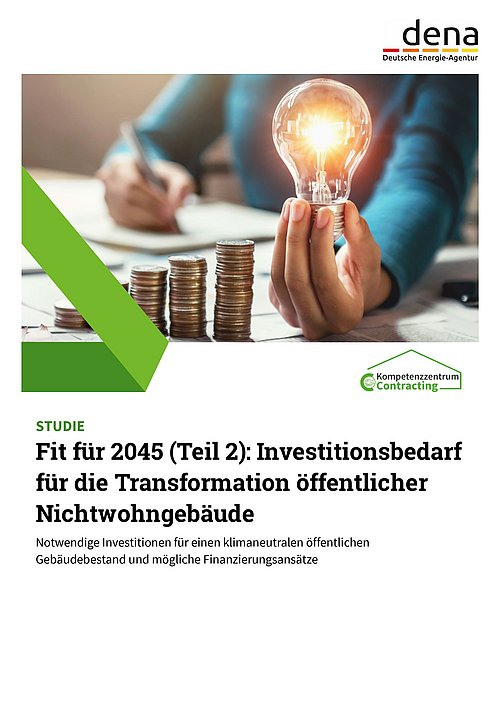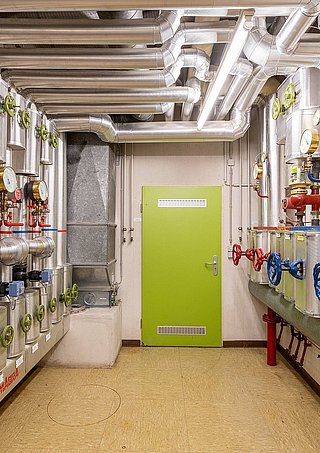Fit for 2045 (Part 2)
Investment requirements for the transformation of public non-residential buildings and possible financing approaches

Germany must be greenhouse gas-neutral by 2045. For the first time, the study quantifies the concrete costs for the energy-efficient refurbishment of all public buildings to a climate-neutral level by 2045 and considers possible financing approaches. It is clear that ‘business as usual’ will not achieve the goal in time and will not fulfil its role model function. To achieve this, the rate and depth of refurbishment must be significantly increased. The costs alone for a corresponding reduction in energy consumption amount to €120 billion, which corresponds to €6 billion annually.
For the calculation, the costs for the federal and state governments and municipalities were analysed and broken down into eleven types of non-residential buildings. In order to show how these investments could be managed by 2045, the study lists 20 financing instruments and analyses six options in detail.
The study provides important guidance for the public sector. It was compiled by Prognos AG and the Fraunhofer Institute for Solar Energy Systems ISE on behalf of dena for the Centre of Expertise for Contracting. The Centre of Expertise for Contracting acts on behalf of the Federal Ministry for Economic Affairs and Climate Action.

